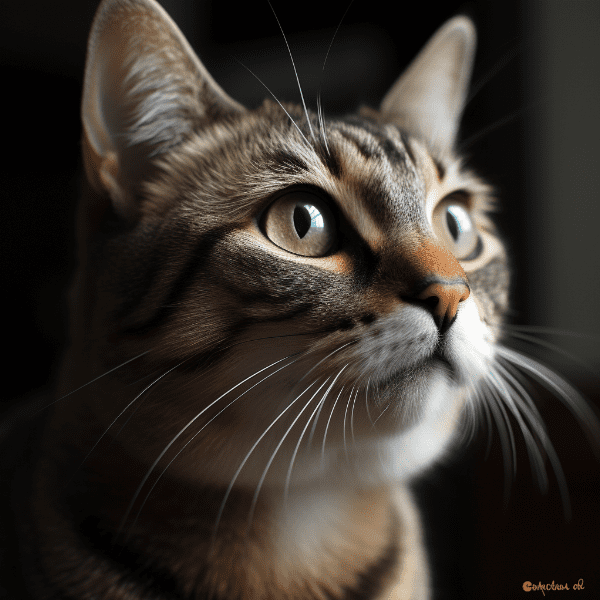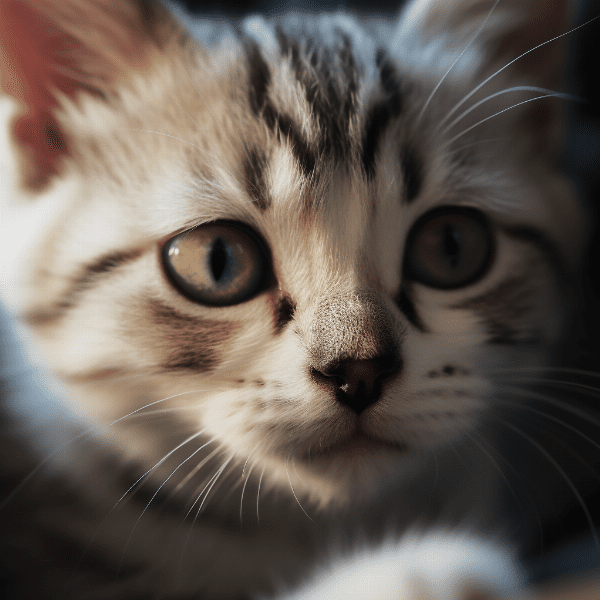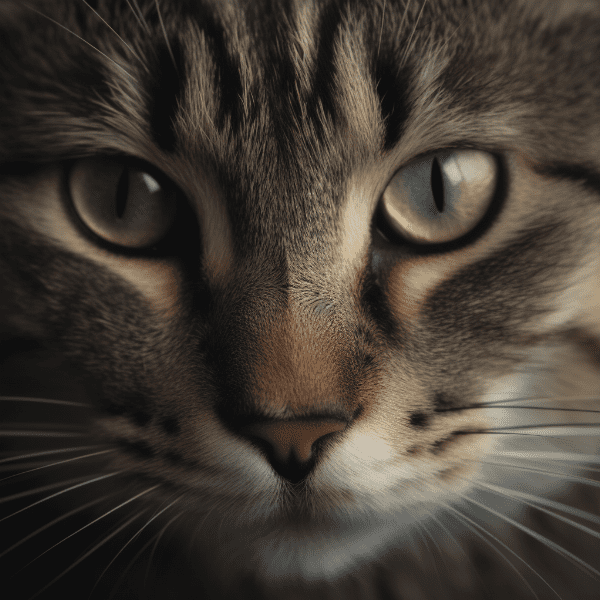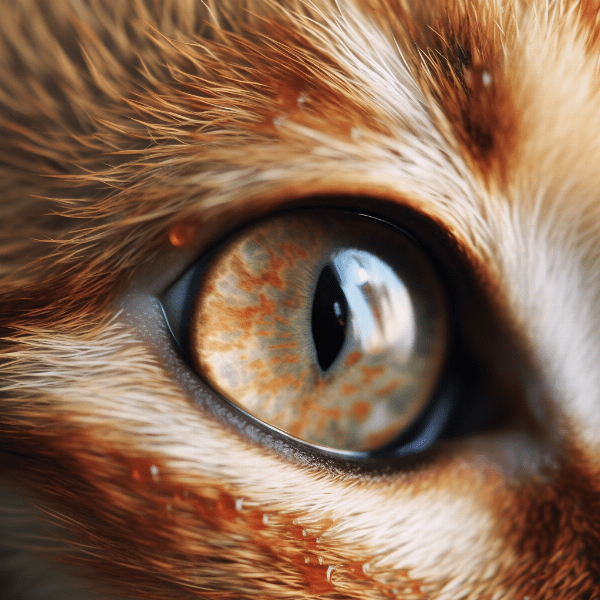Table of Contents
- What is Pink Eye in Cats?
- Symptoms of Pink Eye in Cats
- Causes of Pink Eye in Cats
- How is Pink Eye Diagnosed in Cats?
- Treatment for Pink Eye in Cats
- Home Care for Cats with Pink Eye
- Preventing Pink Eye in Cats
- When to See a Vet for Pink Eye in Cats
- Complications of Untreated Pink Eye in Cats
- Final Thoughts on Pink Eye in Cats
What is Pink Eye in Cats?
Pink eye in cats, also known as feline conjunctivitis, is a common eye condition that affects the conjunctiva. The conjunctiva is the thin, transparent membrane that lines the inner surface of the eyelids and the white part of the eye. When the conjunctiva becomes inflamed, it can lead to symptoms such as redness, swelling, and discharge.
Causes of Pink Eye in Cats
Bacterial conjunctivitis is one of the most common causes of pink eye in cats. This type of infection is typically caused by the bacteria Chlamydia psittaci or Mycoplasma felis. Viral conjunctivitis, on the other hand, is caused by a virus such as the feline herpes virus or the calicivirus.
Symptoms of Pink Eye in Cats
The symptoms of pink eye in cats can vary depending on the underlying cause. However, some common symptoms include:
- Redness and swelling of the eye
- Discharge from the eye
- Squinting or blinking excessively
- Watery eyes
- Cloudy or hazy appearance of the eye
- Sensitivity to light
If you notice any of these symptoms in your cat, it’s important to seek veterinary care. Pink eye can be uncomfortable for your cat and can lead to complications if left untreated.
In the next section, we will discuss how pink eye in cats is diagnosed.
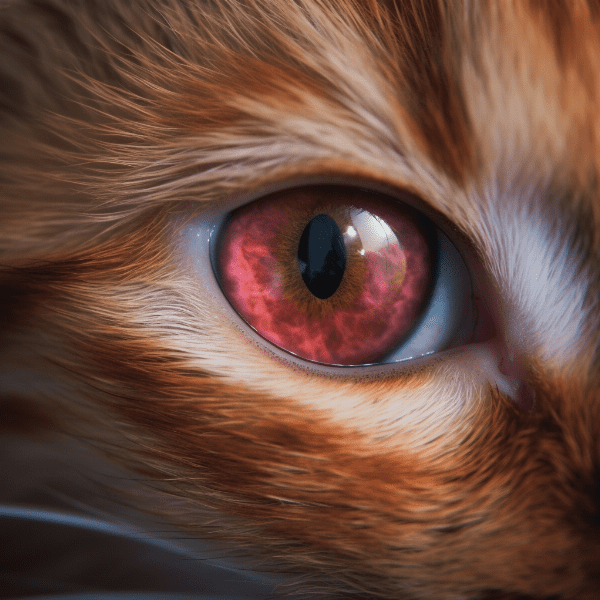
Symptoms of Pink Eye in Cats
The symptoms of pink eye in cats can be uncomfortable and may interfere with their daily activities. If you notice any of the following symptoms, it’s important to seek veterinary care to determine the underlying cause and receive appropriate treatment.
Redness and Swelling of the Eye
One of the most common symptoms of pink eye in cats is redness and swelling of the eye. This can be caused by inflammation of the conjunctiva and can make the eye appear puffy or swollen.
Discharge from the Eye
Another common symptom of pink eye in cats is discharge from the eye. This can be in the form of a clear or yellowish discharge and may be accompanied by crusting or matted fur around the eye.
Squinting or Blinking Excessively
Cats with pink eye may also squint or blink excessively due to the discomfort caused by the inflammation. This can be a sign that the eye is sensitive to light or that there is irritation in the eye.
Watery Eyes
Pink eye in cats can also cause watery eyes, which can be a result of the inflammation and irritation in the eye. This can lead to excessive tearing and may make it difficult for your cat to see clearly.
Cloudy or Hazy Appearance of the Eye
In some cases, pink eye in cats can cause the eye to appear cloudy or hazy. This can be a sign of a more severe infection or an underlying health condition and should be evaluated by a veterinarian.
Sensitivity to Light
Cats with pink eye may also be sensitive to light, which can cause them to avoid bright areas or hide in darker areas of your home.
Overall, the symptoms of pink eye in cats can be uncomfortable and may require prompt veterinary care. In the next section, we will discuss the common causes of pink eye in cats.
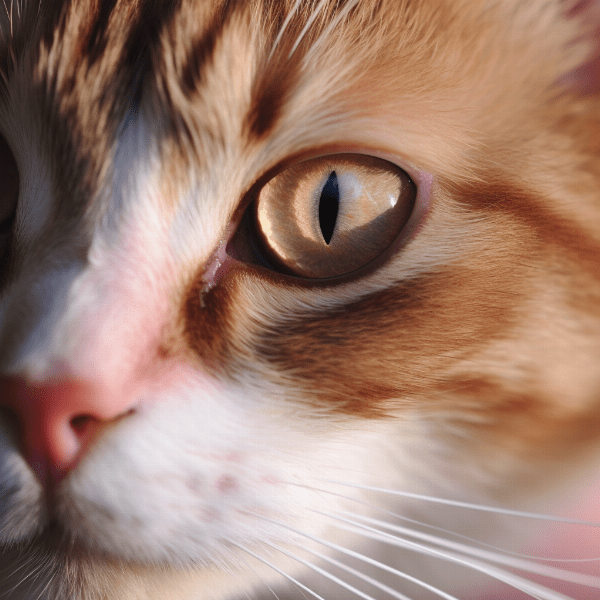
Causes of Pink Eye in Cats
Bacterial Infections
Bacterial conjunctivitis is one of the most common causes of pink eye in cats. This type of infection is typically caused by the bacteria Chlamydia psittaci or Mycoplasma felis. Cats that are housed in crowded or stressful environments, such as shelters or catteries, are at a higher risk of developing bacterial conjunctivitis.
Viral Infections
Viral conjunctivitis is another common cause of pink eye in cats. This type of infection is caused by a virus such as the feline herpes virus or the calicivirus. Cats that have weakened immune systems or are under stress are more susceptible to viral infections.
.
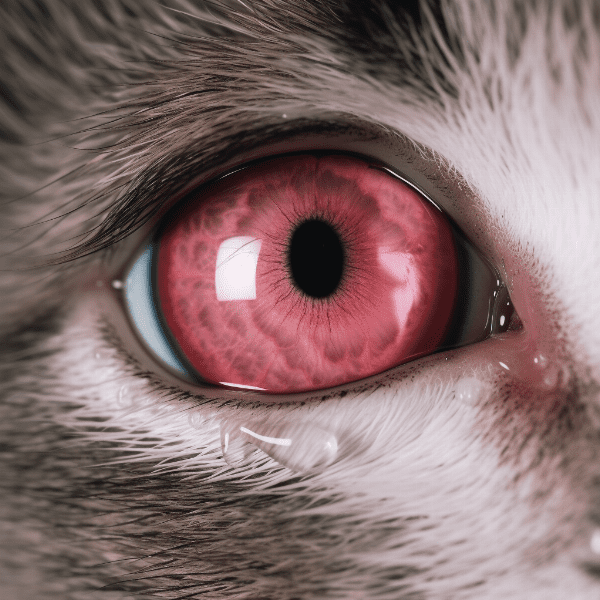
How is Pink Eye Diagnosed in Cats?
Diagnosing pink eye in cats typically involves a thorough physical examination and a review of your cat’s medical history. Your veterinarian may also perform additional tests to determine the underlying cause of your cat’s pink eye.
Physical Examination
During a physical examination, your veterinarian will examine your cat’s eyes for signs of redness, swelling, and discharge. They may also examine your cat’s overall health and look for any underlying health conditions that may be contributing to their pink eye.
Fluorescein Staining
Fluorescein staining is a common diagnostic test used to detect corneal ulcers or scratches. During the test, a small amount of fluorescein dye is placed in your cat’s eye, which will highlight any abnormalities or injuries to the cornea.
Microbial Culture
If your veterinarian suspects that your cat’s pink eye is caused by a bacterial or fungal infection, they may perform a microbial culture. This involves taking a sample of the discharge from your cat’s eye and testing it to determine the type of bacteria or fungus present. This can help guide the appropriate treatment.
Blood Tests
In some cases, blood tests may be performed to help diagnose an underlying health condition that may be causing your cat’s pink eye. For example, blood tests may be used to diagnose feline immunodeficiency virus (FIV) or feline leukemia virus (FeLV).
By performing these diagnostic tests, your veterinarian can determine the underlying cause of your cat’s pink eye and develop an appropriate treatment plan. In the next section, we will discuss the treatment options for pink eye in cats.
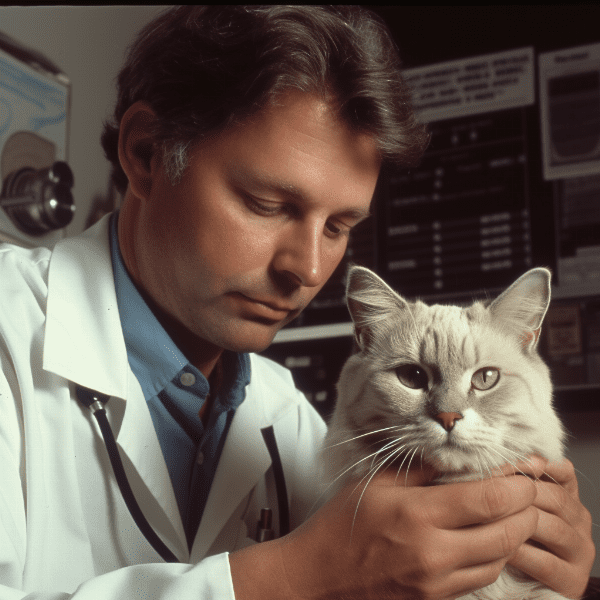
Treatment for Pink Eye in Cats
The treatment for pink eye in cats will depend on the underlying cause of the condition. In many cases, treatment will involve a combination of medication and supportive care.
Medication
If your cat’s pink eye is caused by a bacterial infection, your veterinarian will likely prescribe antibiotics. These can be in the form of eye drops or ointments and will need to be administered as directed by your veterinarian. If your cat’s pink eye is caused by a viral infection, antiviral medications may be prescribed.
If your cat’s pink eye is caused by allergies, your veterinarian may recommend antihistamines or corticosteroids to help reduce inflammation.
Supportive Care
In addition to medication, supportive care can help alleviate the discomfort associated with pink eye in cats. This can include cleaning the discharge from your cat’s eye with a warm, damp cloth or applying a warm compress to the eye to help reduce inflammation.
It’s important to follow your veterinarian’s instructions regarding medication and supportive care to ensure that your cat’s pink eye is properly treated.
Follow-Up Care
Your veterinarian may recommend follow-up appointments to monitor your cat’s progress and ensure that the treatment is working effectively. In some cases, additional diagnostic tests may be necessary to determine the underlying cause of your cat’s pink eye.
Overall, the treatment for pink eye in cats will depend on the underlying cause and severity of the condition. With proper treatment and supportive care, most cats with pink eye will make a full recovery.
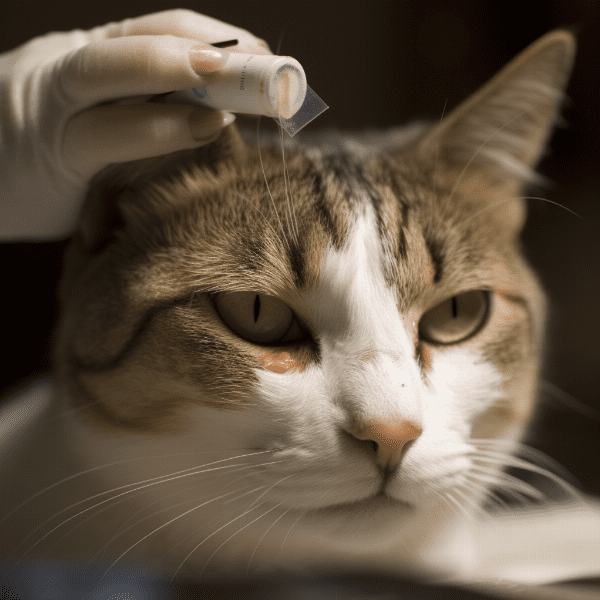
Home Care for Cats with Pink Eye
In addition to medication and veterinary care, there are several steps you can take at home to help alleviate your cat’s pink eye symptoms and promote healing.
Keep the Eye Clean
Cleaning the discharge from your cat’s eye with a warm, damp cloth can help keep the eye clean and prevent the spread of infection. Be sure to use a clean cloth each time to avoid introducing additional bacteria to the eye.
Apply Warm Compresses
Applying a warm compress to the affected eye can help reduce inflammation and promote healing. To apply a warm compress, soak a clean cloth in warm water and wring out the excess water. Hold the warm compress against your cat’s eye for several minutes, making sure not to apply too much pressure.
Administer Medication as Directed
If your veterinarian has prescribed medication for your cat’s pink eye, be sure to administer it as directed. This may involve administering eye drops or ointments several times per day. Follow your veterinarian’s instructions carefully to ensure that the medication is effective.
Monitor for Complications
While most cases of pink eye in cats are mild and resolve with treatment, complications can occur in some cases. Keep an eye out for any changes in your cat’s behavior or symptoms, and contact your veterinarian if you notice any worsening of their condition.
Prevent the Spread of Infection
Pink eye in cats can be highly contagious, so it’s important to take steps to prevent the spread of infection. Wash your hands frequently and avoid touching your cat’s eyes. Keep your cat away from other cats until their symptoms have resolved.
By following these home care tips, you can help alleviate your cat’s pink eye symptoms and promote healing. Be sure to consult with your veterinarian if you have any concerns or questions about caring for your cat at home.
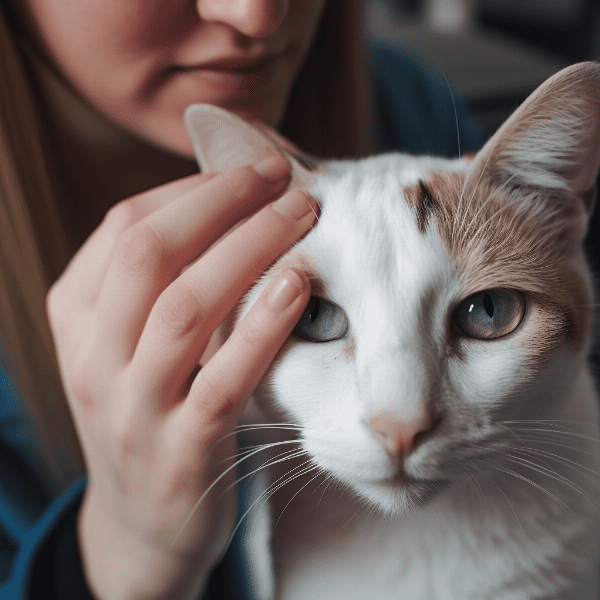
Preventing Pink Eye in Cats
While pink eye in cats can be difficult to prevent entirely, there are steps you can take to reduce your cat’s risk of developing the condition.
Keep Your Cat’s Environment Clean
Keeping your cat’s environment clean can help reduce their risk of developing pink eye. This includes regularly cleaning their litter box and keeping their living space free of dust and other allergens.
Minimize Stress
Stress can weaken your cat’s immune system and increase their risk of developing pink eye. To minimize stress, provide your cat with a safe and comfortable living space, plenty of toys and activities, and a consistent routine.
Keep Your Cat Up-to-Date on Vaccinations
Vaccinations can help protect your cat from viral infections that can lead to pink eye. Be sure to keep your cat up-to-date on their vaccinations, including their annual FVRCP vaccine.
Practice Good Hygiene
Practicing good hygiene can help reduce the spread of infection that can lead to pink eye. Wash your hands frequently and avoid touching your cat’s eyes or face.
Monitor Your Cat’s Health
Regular check-ups with your veterinarian can help catch health issues early, including those that can lead to pink eye. Be sure to schedule regular appointments for your cat and keep an eye out for any changes in their behavior or symptoms.
By taking these steps to prevent pink eye in cats, you can help keep your cat healthy and happy. If you have any concerns or questions about your cat’s health, be sure to consult with your veterinarian.
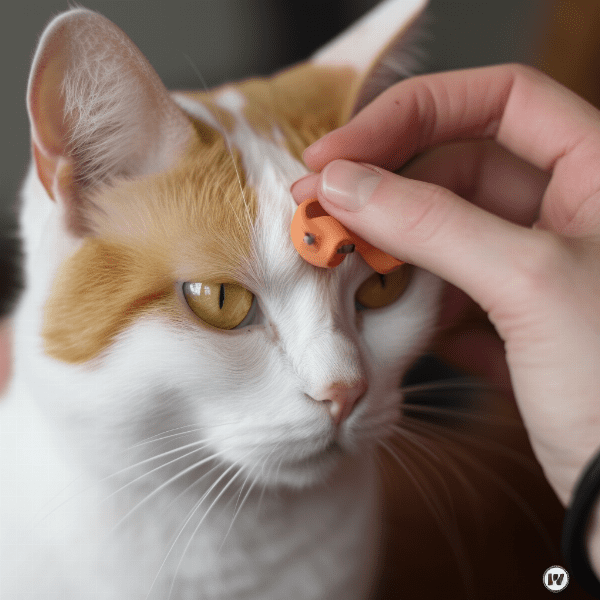
When to See a Vet for Pink Eye in Cats
While pink eye in cats is typically a mild condition that can be treated at home, there are times when it’s important to seek veterinary care.
Persistent Symptoms
If your cat’s pink eye symptoms persist for more than a few days, it’s important to seek veterinary care. This may be a sign of a more severe infection or an underlying health condition that requires treatment.
Changes in Behavior
If you notice any changes in your cat’s behavior, such as decreased appetite or lethargy, it’s important to seek veterinary care. These may be signs that your cat’s pink eye is causing them discomfort or that there is an underlying health issue.
Severe Symptoms
If your cat’s pink eye symptoms are severe, such as significant swelling or discharge, it’s important to seek veterinary care immediately. These may be signs of a more serious infection or injury.
Difficulty Administering Medication
If you’re having difficulty administering medication to your cat or if they’re having an adverse reaction to the medication, it’s important to seek veterinary care. Your veterinarian may be able to provide alternative medication or help you administer the medication more effectively.
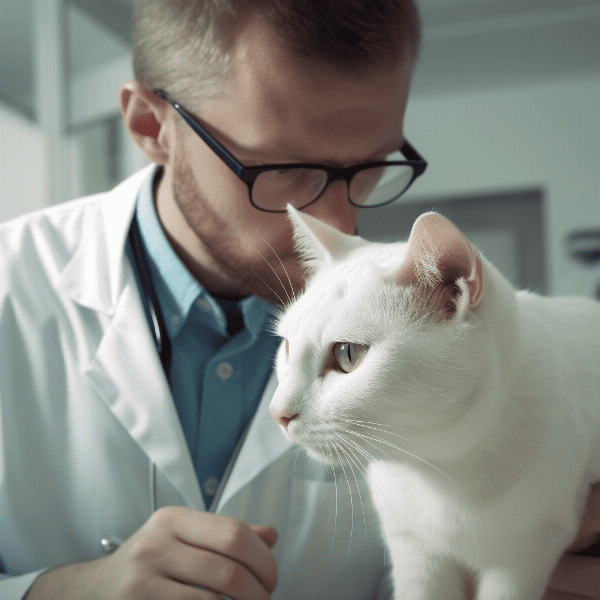
Complications of Untreated Pink Eye in Cats
While pink eye in cats is typically a mild condition that can be treated with medication and supportive care, untreated pink eye can lead to several complications.
Corneal Ulcers
Untreated pink eye can lead to corneal ulcers, which are open sores on the cornea that can be painful and can affect your cat’s vision. Corneal ulcers can be difficult to treat and may require surgery in severe cases.
Spread of Infection
Pink eye in cats can be highly contagious, and untreated pink eye can lead to the spread of infection to other cats. This can be particularly concerning in multi-cat households or in animal shelters.
Chronic Pink Eye
Untreated pink eye can become chronic, leading to persistent discomfort and potentially causing long-term damage to your cat’s eyes. Chronic pink eye may require more aggressive treatment, such as prolonged use of medication or surgery.
Underlying Health Conditions
Pink eye can be a symptom of an underlying health condition, such as feline herpes virus or feline immunodeficiency virus (FIV). Untreated pink eye may allow these underlying health conditions to go undiagnosed and untreated, leading to more serious health issues down the road.
By seeking veterinary care and following your veterinarian’s treatment plan, you can help prevent complications of untreated pink eye in cats. If you have any concerns about your cat’s health, be sure to contact your veterinarian.
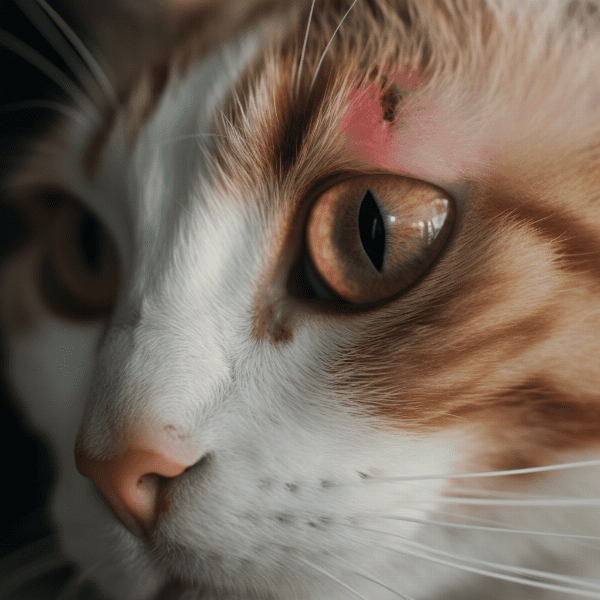
Final Thoughts on Pink Eye in Cats
Pink eye in cats is a common condition that can be caused by a variety of factors, including bacterial or viral infections, allergies, and environmental irritants. While pink eye is typically a mild condition that can be treated with medication and supportive care, it’s important to seek veterinary care if your cat’s symptoms persist or worsen.
By keeping your cat’s environment clean, minimizing stress, and practicing good hygiene, you can help reduce their risk of developing pink eye. Regular check-ups with your veterinarian can also help catch health issues early, including those that can lead to pink eye.
If your cat is diagnosed with pink eye, be sure to follow your veterinarian’s instructions regarding medication and supportive care. By administering medication as directed and providing supportive care at home, you can help alleviate your cat’s symptoms and promote healing.
Remember that untreated pink eye can lead to complications, such as corneal ulcers and the spread of infection. If you have any concerns about your cat’s health, be sure to contact your veterinarian.
With proper care and attention, most cats with pink eye will make a full recovery. By taking steps to prevent pink eye and seeking veterinary care when necessary, you can help keep your cat healthy and happy.
